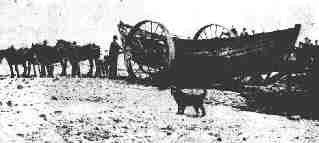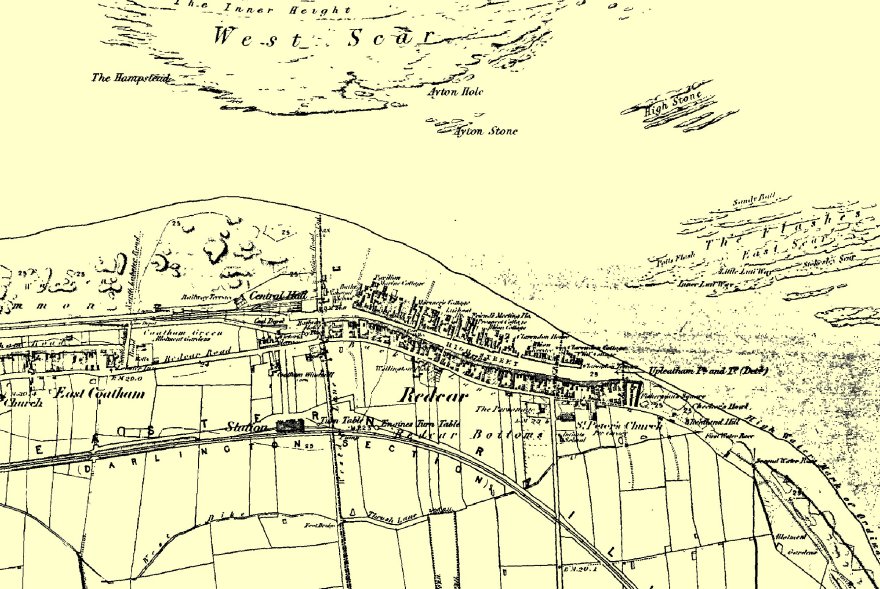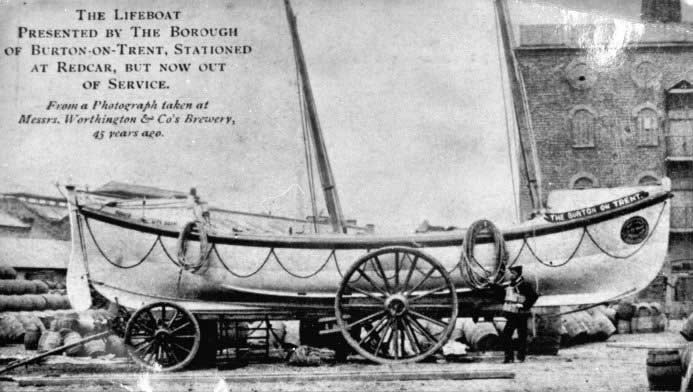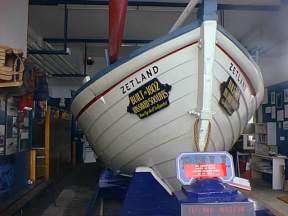History
The first lifeboat to be stationed at Redcar arrived on October 7th, 1802. It had been built by Henry Greathead, of South Shields, and was later christened Zetland.

Zetland
The arrival of the lifeboat was a source of great festivity and rejoicing. A contemporary account records that “in the evening the fishermen were regaled with ale to drink success to the boat and the health of the builder”. They also declared “in the most voluntary and heartfelt manner” that the lifeboat would never want for hands to man her.
The fishermen were as good as their word, and when, on December 6th, the brigs Friendship and Mary were blown ashore on the North Gare, some five miles north of Redcar, the new lifeboat was taken to the scene with commendable speed and the shipwrecked crews, totalling 15, brought to safety.
 At that period Redcar was a village of only two rows of houses, and to alert the lifeboat crew a drum was beaten to the rhythm of “Come along, brave boys, come along.” The management of the lifeboat was at first undertaken by a local committee and later by the Tees Bay Lifeboat Society, which financed lifeboats on both sides of the river from tolls levied on ships using the Tees. It was the heyday of the sailing vessel and many hundreds were employed in carrying coal from north east ports to London and the south. They were entirely at the mercy of the weather and scores were driven ashore by the frequent onshore gales, for which the North Sea is notorious.
At that period Redcar was a village of only two rows of houses, and to alert the lifeboat crew a drum was beaten to the rhythm of “Come along, brave boys, come along.” The management of the lifeboat was at first undertaken by a local committee and later by the Tees Bay Lifeboat Society, which financed lifeboats on both sides of the river from tolls levied on ships using the Tees. It was the heyday of the sailing vessel and many hundreds were employed in carrying coal from north east ports to London and the south. They were entirely at the mercy of the weather and scores were driven ashore by the frequent onshore gales, for which the North Sea is notorious.
On August 13th, 1829, the coal laden brig Aurora, was wrecked on the North Gare by a fierce north easterly storm. The Seaton Carew lifeboat was launched, but the rough seas proved to be too much for the crew, and after three hours toiling at the oars they were obliged to return to shore in an exhausted condition. In the meantime the Zetland had been brought from Redcar and was launched with a crew of twenty-six, under the command of Lt. Richard Elsworthy Pym of the coastguard. Even with the extra men at the oars it was a while before the Zetland managed to reach the Aurora and bring the crew of eight and the captain and his wife to safety.
For his part in the rescue Lt. Pym was awarded the gold medal of the RNLI.
Not all rescue attempts were so successful. On Christmas Day, 1836, a crewman was washed from the Zetland and drowned during a vain attempt to save the crew of the Danish brig, Caroline. The man, William Guy, was a Tees pilot, and it is said that he left a service in chapel to take his place in the lifeboat.
During 1858 the Tees Bay Lifeboat Society decided to hand over the administration of their boats to the RNLI.
On February 17th, 1864, the Zetland sustained damage whilst rescuing the crew of seven from the brig Brothers. The RNLI considered the old boat no longer fit for service and supplied a new self-righting lifeboat named Crossley. Arrangements were made to have the Zetland broken up and a local carpenter was employed to carry out the task. An angry crowd prevented the work commencing and, after negotiation, the boat was given to the townsfolk.
The Zetland can still be seen, fully preserved, at the Zetland Lifeboat Museum.
The Crossley was not a popular boat, and there were complaints that there was less room than in the Zetland because of the air boxes that provided the self-righting ability. A larger self-righter, Burton-on-Trent, was provided, but was considered too heavy to be transported with ease across soft sand, and less manageable at sea than the Zetland.

Burton-On-Trent
So great was the controversy that in 1876 the RNLI considered withdrawing the lifeboat and closing the station. Before such drastic action was taken a solution was offered by a charitable society, The United Order of Free Gardeners. They provided a lifeboat on similar lines to the Zetland and operated and maintained it independently of the RNLI.
A terrific storm blew from the ENE on October 28th, 1880, causing havoc on land and sea. Around 6.00 a.m. the Whitby brig Emmanual Boutcher was blown ashore to the east of Redcar. The rocket brigade were quickly on the scene and five rockets were fired. One of the rocket lines lodged in the rigging, but the four man crew of the brig were unable to reach it because of heavy seas washing over the deck. They were rescued by the RNLI lifeboat, Burton-on-Trent.
Later in the morning the schooner, Luna was also driven ashore. Her crew of four were saved by the Free Gardners lifeboat, but the lifeboat carriage became bogged down as the boat was being launched and was not recovered until the following day.
Shortly before dusk the Stockton steamship Tees was deliberately run aground to avoid foundering. Her crew of twenty were rescued by the rocket brigade.
A few hours later the German barque, Minna, struck an outlying reef of rocks and broke in two. For the second time that day the Burton-on-Trent was launched, and again the rocket brigade set up their equipment. Neither were needed, however, as local people helped the crew of eleven from the barque at low water. The only casualty was the lifeboat, which had a hole stove in her side whilst she was being launched.
The storm continued unabated, and at 11.00 p.m. the brig, Luna, which had lost her masts and anchors, was driven onto the rocks. She drifted clear and was washed through Redcar pier. Heavy seas made a clean sweep over her, and there seemed little hope for her crew. The rocket brigade had used all their rockets on previous wrecks, and both lifeboats were out of action. As a last resort the Zetland was brought to the scene and, despite her venerable age, was used to bring the seven men crew of the Luna to safety.
It was the last occasion on which the Zetland was launched on a rescue mission. Over 500 lives had been brought to safety in her stout hull during a period of 78 years. In 1907 the Zetland was moved into the Free Gardners lifeboat house, the Free Gardners lifeboat having been sold a few years previously.
The next Redcar Lifeboat was the 35ft Fifi and Charles. The last “pulling” lifeboat to be stationed at Redcar, she was launched 17 times and saved 41 lives. Usually launched by a team of horses, on one particular day the horses were not ready and instead dozens of bystanders were encouraged to take the drag ropes and haul the lifeboat to the shore edge. While doing this one woman, Margaret Crosby, slipped under the launching carriage and was crushed to death.

